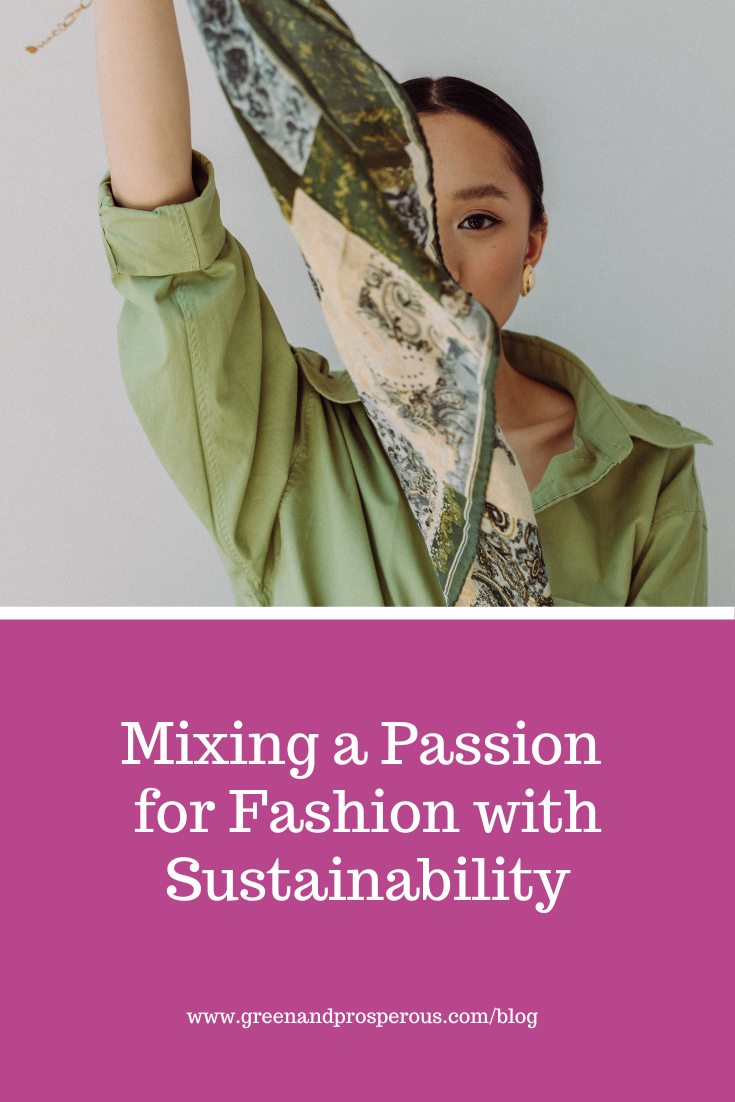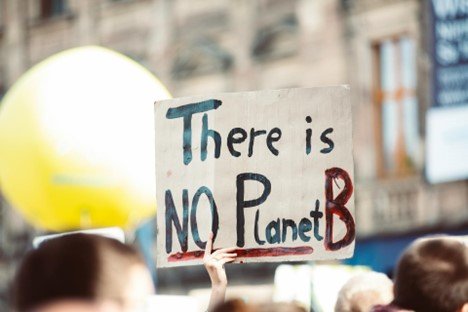Mixing a Passion for Fashion with Sustainability
/We’ve all heard a lot about sustainability and understand it has to do with reducing greenhouse emissions and lowering our impact on the planet, but what does that look like when it comes to fashion? According to the United Nations Environment Programme, the fashion industry accounts for 10% of all carbon emissions around the world, more than the flight and shipping industry combined. This is a devastating figure, but measures are being taken to lower the impact, and you can play your part. Throughout this article, we’ve put together a series of ways to hold onto your passion for fashion while considering sustainability factors that could make a real difference.
Why Care About Sustainable Fashion?
You may have some idea of what sustainable fashion involves, but to realise its wider impact, take a look at the following reasons in order to understand the huge positives that can result when you decide to source your clothes more sustainably:
Supports proper working conditions and fair wages
Reduces waste
Saves animals, therefore improving the ecosystem
Lowers water usage
Reduces carbon emissions
Accessories for Life
Adding accessories to an outfit helps to bring everything together – from belts, bags and earrings. However, you should take care to examine what they’re made of and ensure they’ll last. Further, if your accessories serve an ongoing function, you’re even closer to sustainability. For example, you can accentuate your outfit with a designer tote bag made from eco materials. Not only will your new tote bag look fantastic and catch eyes as you walk down the street, but you’ll also reduce your impact on the environment by eliminating the need for single-use carrier bags - choose your tote bag at SSENSE where you’ll find plenty of suggestions in terms of colour, brand and size.
Upcycling
Upcycling is a means of turning old materials and products into something new, and it’s a great way to reduce the fashion industry’s impact on the environment. Upcycling differs from recycling because garments don’t need to be broken down before being repurposed. If you’re handy with a sewing machine, scissors and threading the eye of a needle, take those old t-shirts, bags or dresses and turn them into something new and stylish that you can make use of for another few years. Not only will you be helping to reduce carbon emissions, but you’ll also be wearing 100% unique clothing to suit your own personal style, alongside starting a new hobby!
Cruelty-Free and Vegan
When clothes are cruelty-free and vegan, it means they’re manufactured without the use of animals. This sustainability effort, however, is a double-edged sword. On the one hand, this type of fashion saves the lives of animals that are meaninglessly slaughtered. However, the majority of PETA-approved brands manufacture PVC-based products, which pollutes the environment the animals live in.
This has been recognized by vegan fashion activists because they now push for environmental consideration for a manufacturer to be considered “cruelty-free and vegan.” To deal with these demands, products are made using mushrooms, fruits, plants, or materials that have been created in a lab.
Green Fashion
Think about waste, pollution, and careless use of harmful materials, which are all contributing to the fast-increasing rate of global warming. Even in today’s more eco-minded society, 69% of clothing manufacturers still use plastic, which has a devastating impact on the environment. For example, producing polyester-based textiles uses around 70 million barrels of oil annually, which all ends up finding its way to the ocean, where it can destroy ecosystems.
To combat the impact of the fashion industry, many manufacturers are pushing to replace plastics with biodegradable alternatives. So far, this trend is catching on because the number of manufacturers producing clothing made from organic cotton, kelp leather, mushroom leather, or hemp is on the rise. For example, check out these 9 sustainable shoe brands: they’re a great eco-friendly option when you’re in need of some suave shoes.
Thrifting and Sharing
Thrifting is a great way to help support sustainable fashion. If you head to second-hand shops and thrift stores, both online and at your local high-street, you may find pre-loved designer clothing without the high price tag. Not only will you look fantastic in the clothes you buy, but you also won’t have contributed to another round of manufacturing and will save some of your pocket money.
Plus, instead of hitting the shops, ask to have a look through your friends’ and family’s wardrobe to see if there’s a chance of borrowing something they own. In turn you’ll be ticking two boxes: you’ll get the feeling of wearing something new and you’ll also be helping to create a positive impact on the environment.
There’s a clear benefit to thrifting and swapping, but there’s a downside as well. Unfortunately, you have no way of vetting the condition and background of a garment before you make the purchase. If you’re buying leather or plastic-based clothing, it may eventually start releasing toxic chemicals into your skin. Eventually, depending on exposure levels, harmful toxins can impact your skin, nails, hair, and cause hormone imbalances.
Shop Local and Less
The majority of apparel purchased in Canada is imported (95%), which means it produces harmful pollution as it travels from different countries across the globe. You can support your local economy and help reduce carbon emissions by filling part of your wardrobe with locally sourced clothing, both online and in store.
like this? Please pin!
Buying locally is great, but it’s highly impractical given the lack of choice available from domestic manufacturers. Therefore, instead of buying a new outfit every time you hit the town, consider buying a small selection and rotating them - you can add differences by using accessories, different hairstyles and makeup choices.
Sustainable fashion is an effort between policymakers, brands, and consumers to steer toward a carbon-neutral fashion industry. Although the impact of manufacturing damage relies on brands and government policies, you can play your part by making informed decisions before you buy your next outfit; check the labels to see how and where the clothing was made. Taking all of this into consideration can make a huge difference to the future.
About the Author:
Jacob Robinson is a freelance business writer with over 5 years of experience. Born in Nottingham, United Kingdom, Jacob specialises in writing about the lifestyle and fashion industry, and takes his interest from his time at Manchester University studying journalism.











































We’ve all heard a lot about sustainability and understand it has to do with reducing greenhouse emissions and lowering our impact on the planet, but what does that look like when it comes to fashion? According to the United Nations Environment Programme, the fashion industry accounts for 10% of all carbon emissions around the world, more than the flight and shipping industry combined. This is a devastating figure, but measures are being taken to lower the impact, and you can play your part. Throughout this article, we’ve put together a series of ways to hold onto your passion for fashion while considering sustainability factors that could make a real difference.